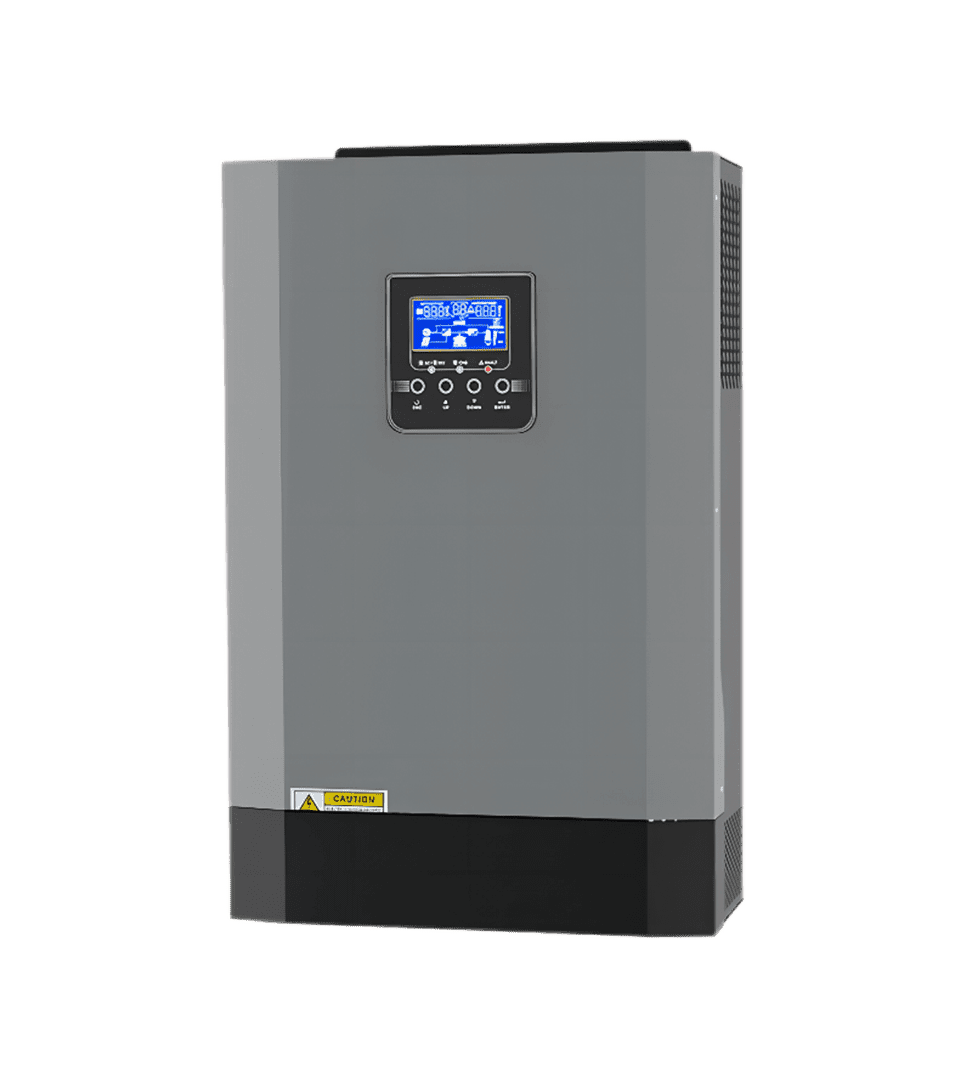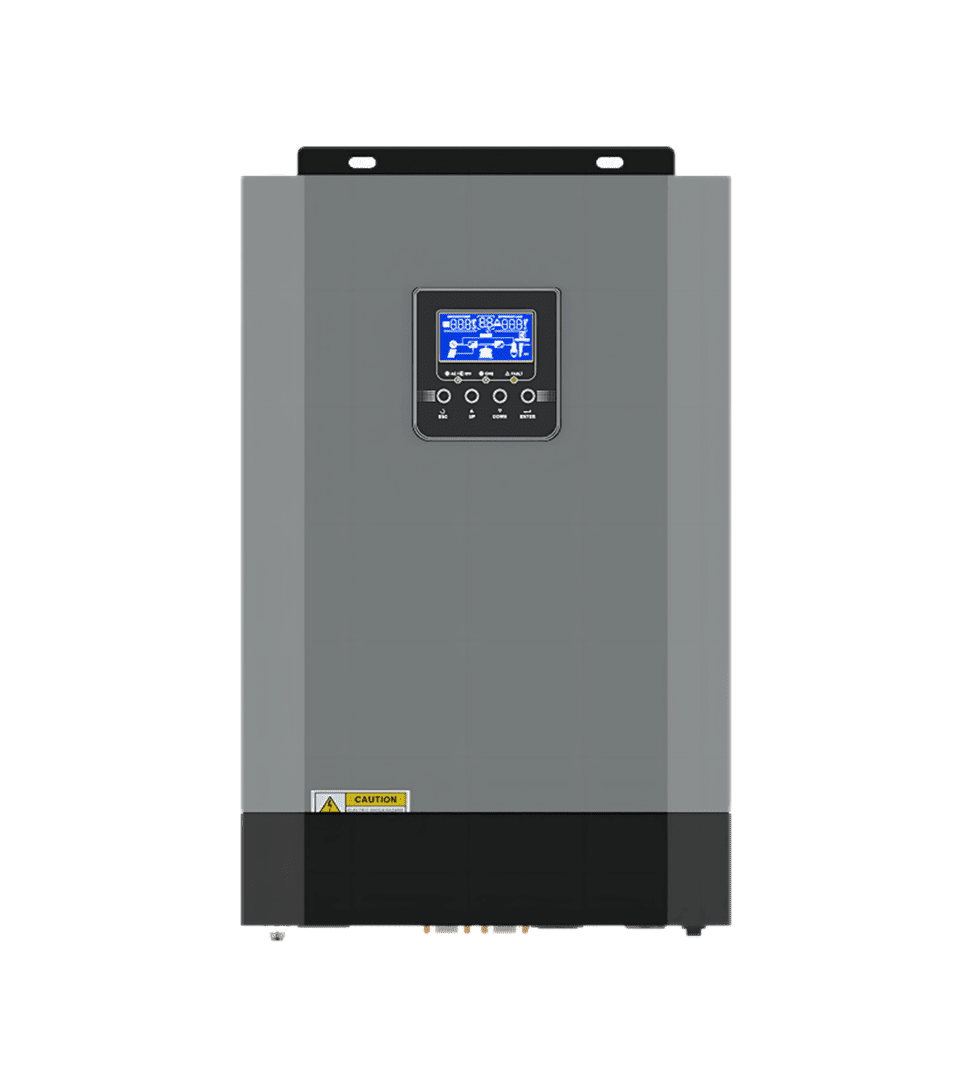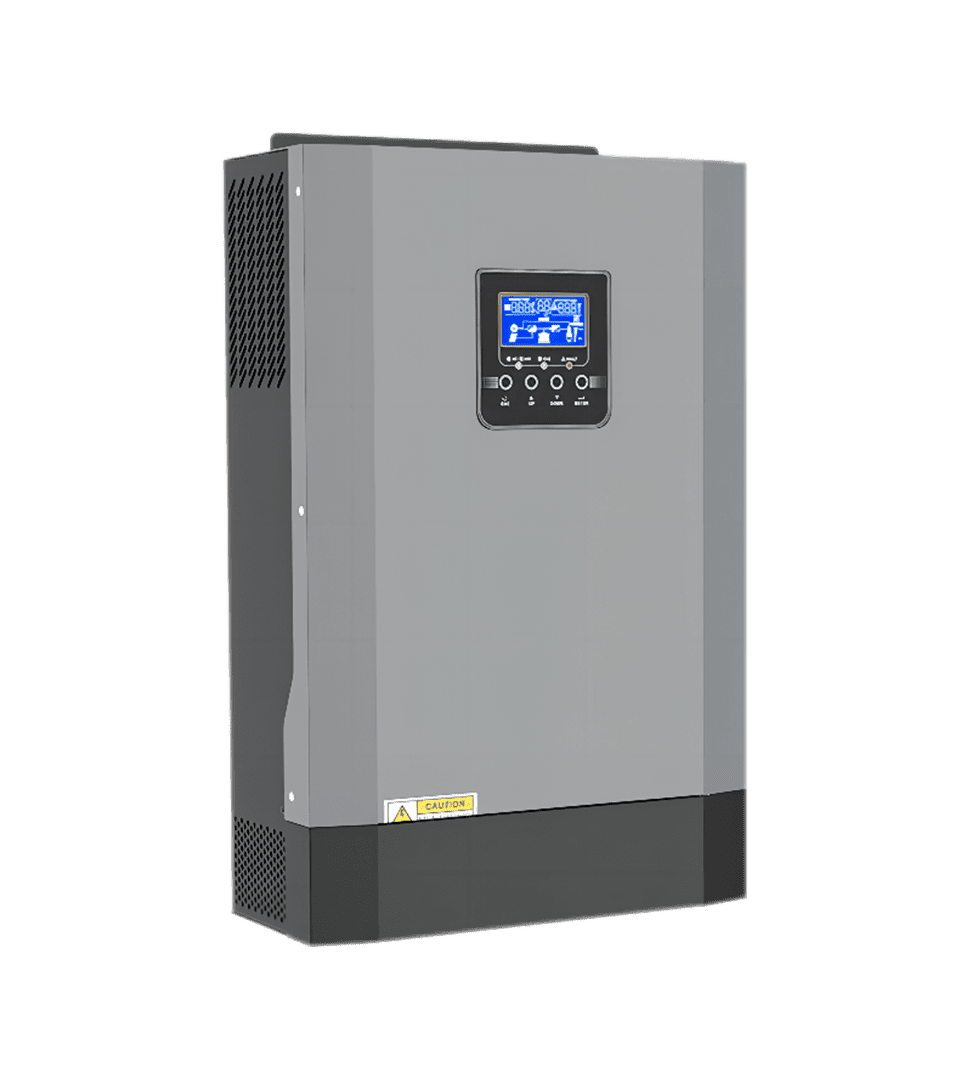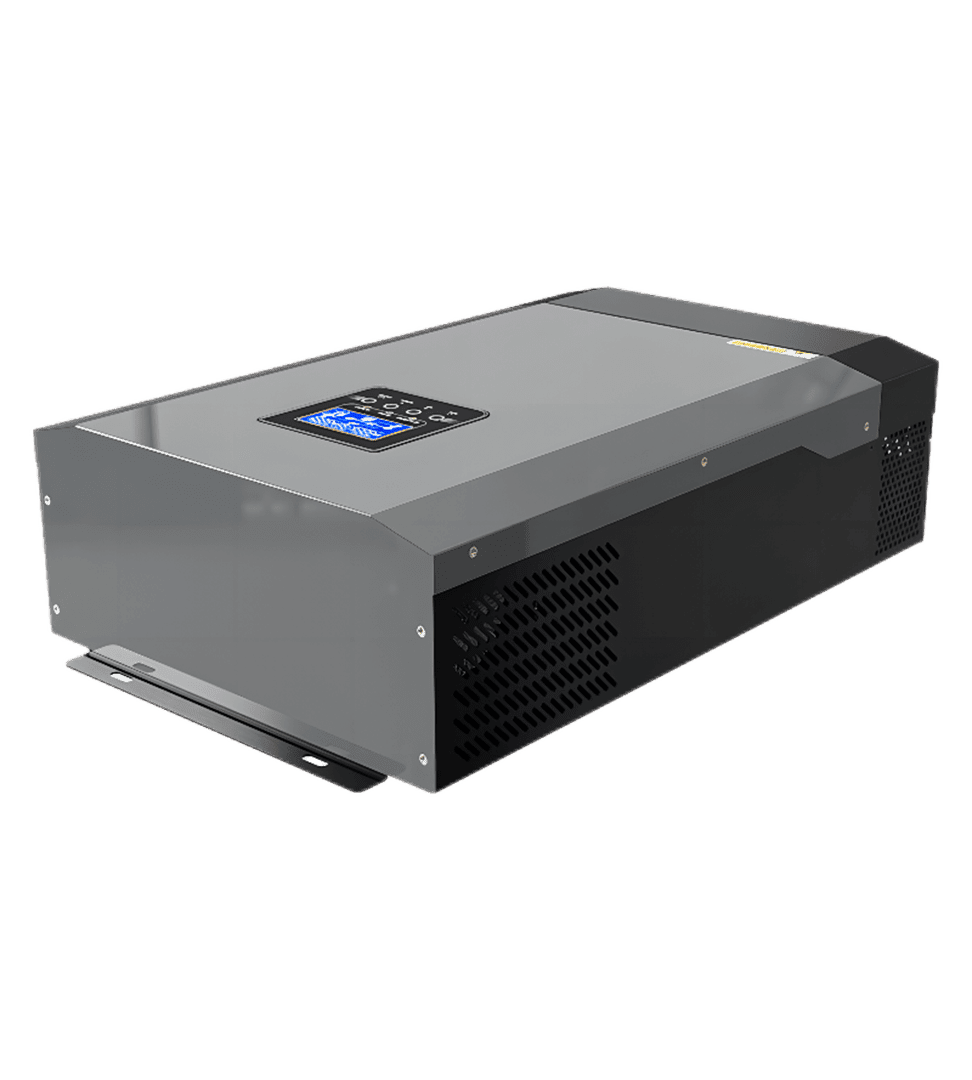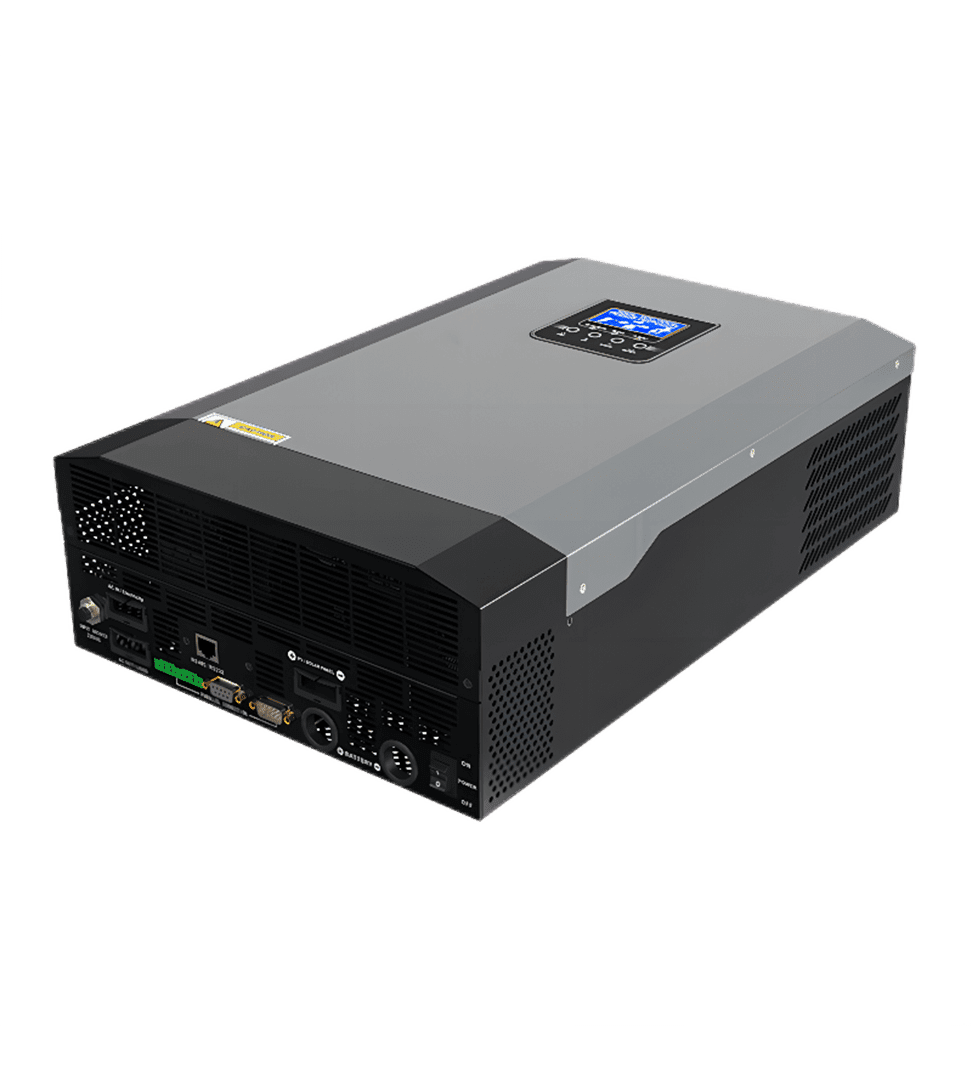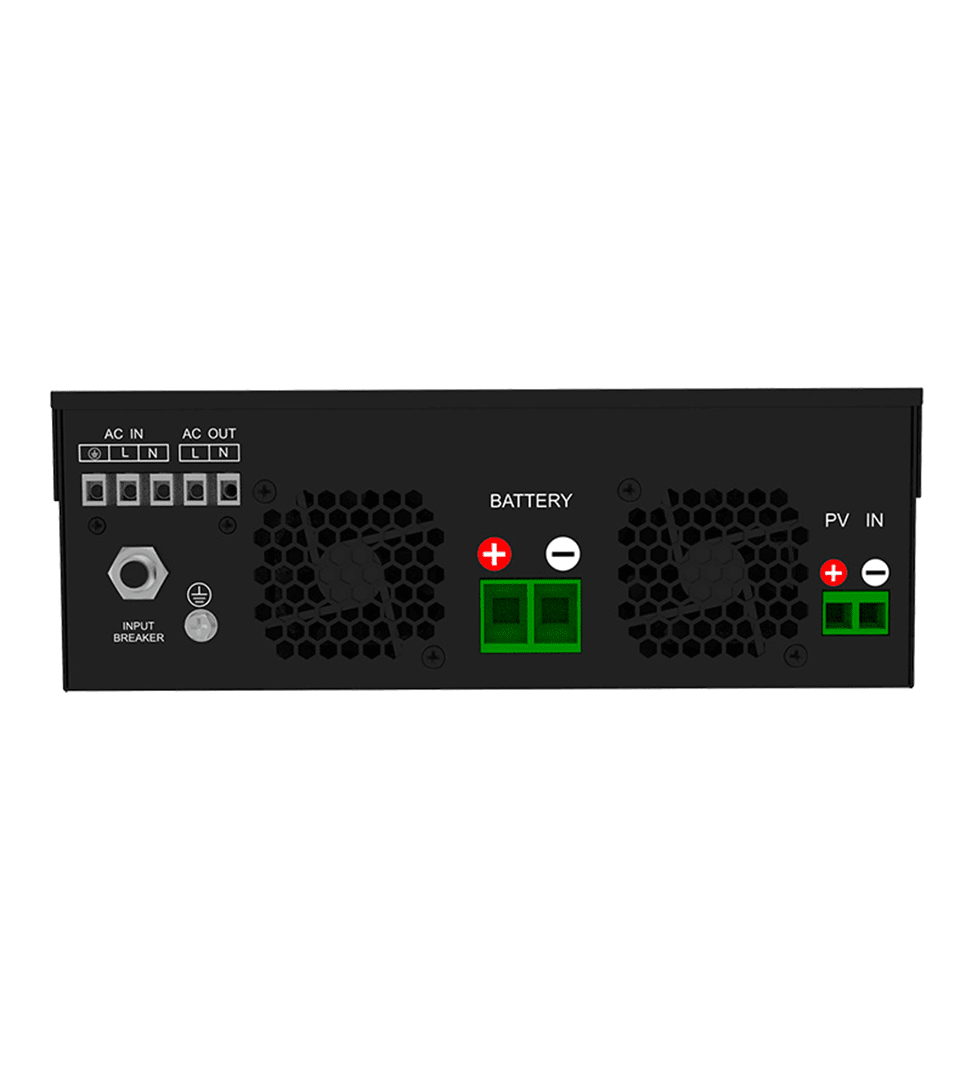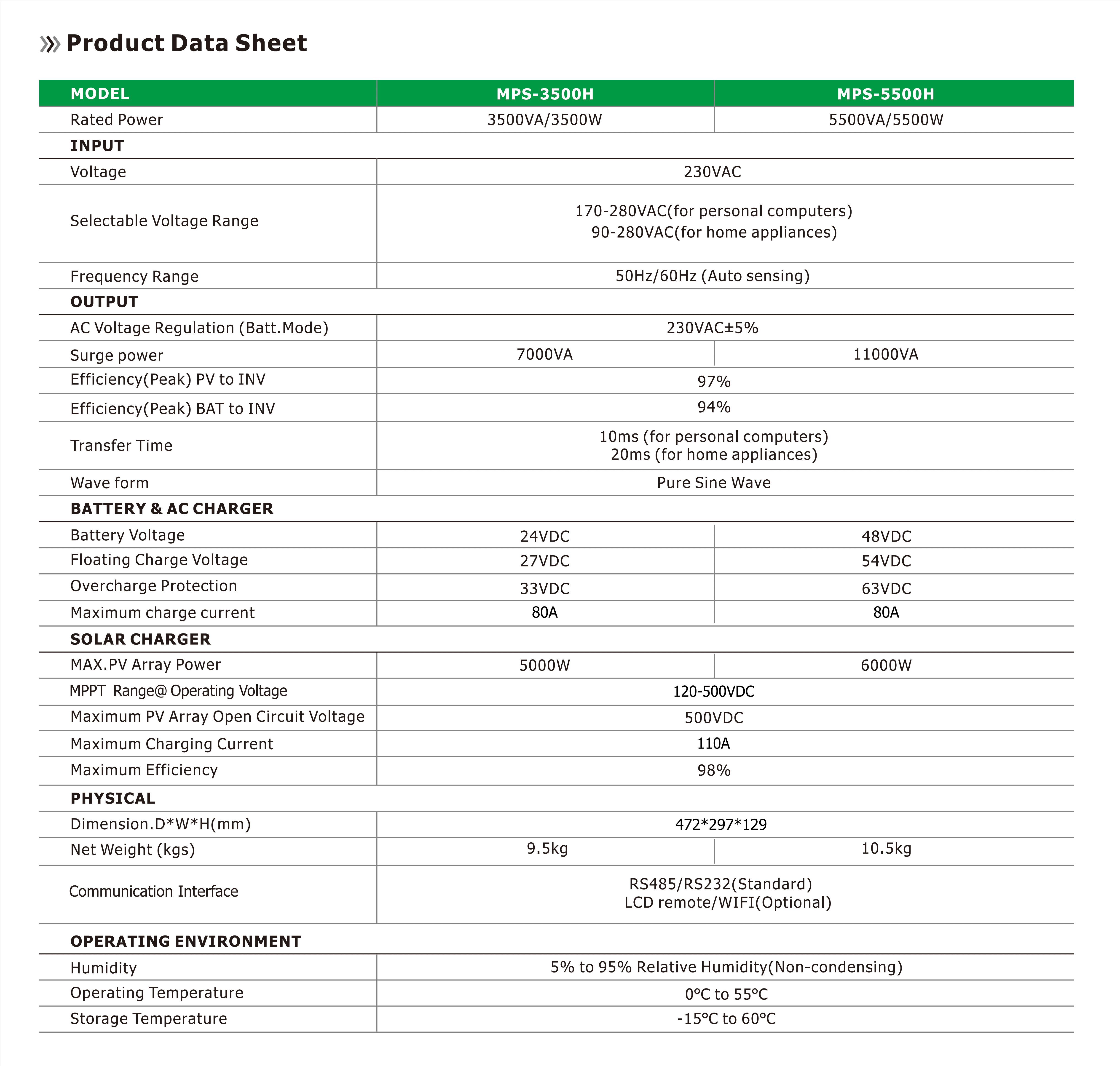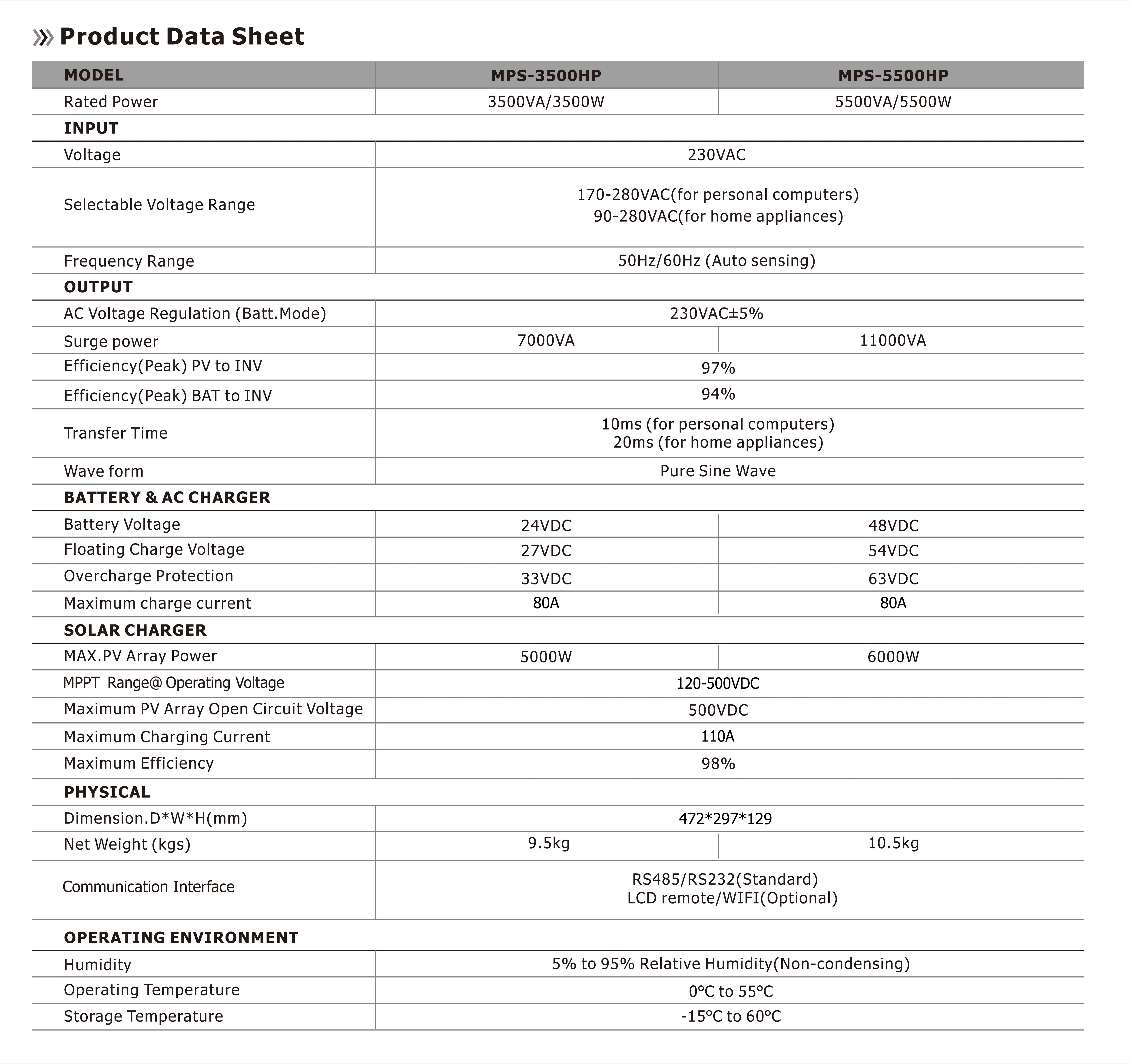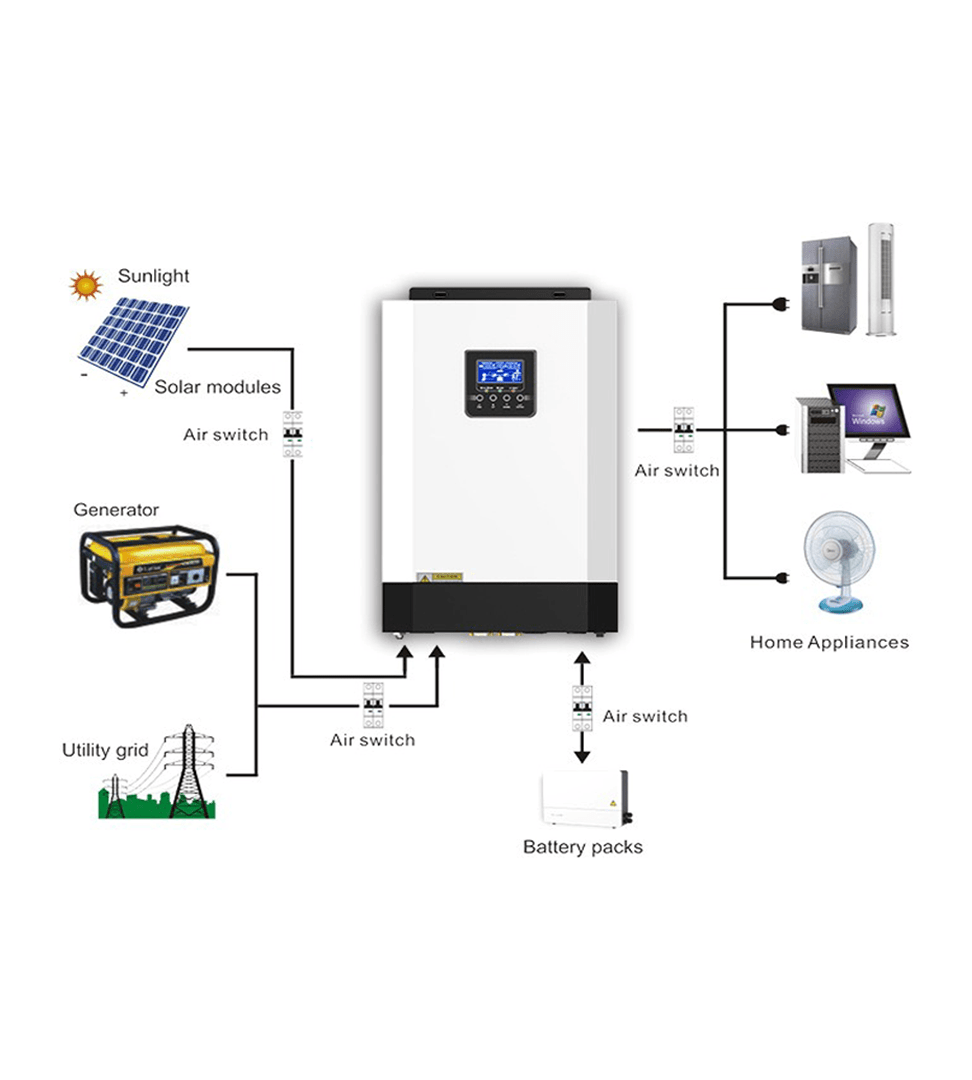MPS-H Solar Hybrid Inverter is the ultimate choice for harnessing solar energy with unmatched efficiency and reliability. With advanced features and intelligent design, it ensures seamless integration of solar panels and batteries to maximize energy savings. Experience uninterrupted power and take control of your energy consumption like never before. Stay connected, stay efficient with MPS-H.
MPS-HP, our flagship Solar Hybrid Inverter with Parallel Installation capability. Unlock unlimited power potential by connecting multiple inverters in parallel. Scale up your system’s capacity effortlessly and enjoy unparalleled flexibility. With MPS-HP, you can harness the true power of the sun, ensuring optimal performance and reliable backup power. Experience energy independence like never before with MPS-HP.
Connectivity is the future, and our Solar Hybrid Inverters are ready to keep you connected. With built-in WiFi connectivity, you can easily monitor and control your system from anywhere, anytime. Stay informed about your energy production, consumption, and system health, all at your fingertips.

